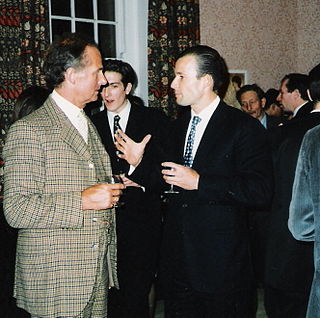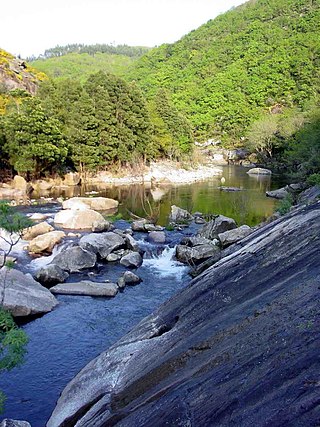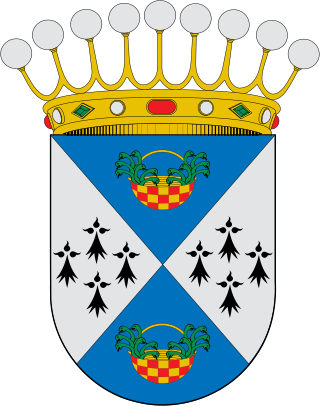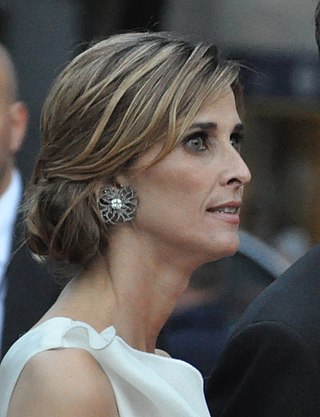Related Research Articles

The Spanish nobility are people who possess a title of nobility confirmed by the Spanish Ministry of the Presidency, Justice and Relations with the Cortes, as well as those individuals appointed to one of Spain's three highest orders of knighthood: the Order of the Golden Fleece, the Order of Charles III and the Order of Isabella the Catholic. Some members of the Spanish nobility possess various titles that may be inherited or not, but the creation and recognition of titles is legally the prerogative of the monarchy of Spain.

Kyril, Prince of Preslav, Duke in Saxony, also known as Kyril of Saxe-Coburg, is the second son of Simeon II and Margarita Saxe-Coburg-Gotha. His father, Simeon, served as Tsar of Bulgaria from 1943 to 1946 and Prime Minister of Bulgaria from 2001 to 2005.

The Marquessate of Samaranch is a hereditary title of Spanish nobility. The title was bestowed by King Juan Carlos I of Spain on Juan Antonio Samaranch on 30 December 1991, honouring his efforts in support of the Olympic movement as President of the International Olympic Committee.
Marquisate of Casa Real is a title of the Spanish nobility.

The County of Trastámara was a tenancy of the crown in the Kingdom of Galicia in the Middle Ages. Its name comes from the Latin tra(n)s Tamar(is), meaning "beyond [north of] the Tambre", a river which runs through Galicia. It was regularly granted to men of a single family, the House of Traba from the 11th century into the 13th, after which it was often given for life to others, including Alvar Núñez Osorio and the future King Henry II of Castile, whose dynasty is thus known as the House of Trastámara. On 4 February 1445 in San Martín de Valdeiglesias, it was granted as a hereditary possession to Pedro Álvarez Osorio by Juan II of Castile.

Count of Teba is a hereditary title in the Peerage of Spain, granted in 1522 by Charles I to Diego Ramírez de Guzmán, son of the 1st Lord of Teba. The name makes reference to the municipality of Teba, in Málaga, Spain.

Count of Cabra is a Spanish noble title created by King Henry IV of Castile on 2 November 1455 for Diego Fernandez de Cordova and Montemayor, 1st Viscount of Iznájar. The titleholder is a Grandee of Spain, the third oldest such title in Spain.

María del Rosario Nadal y Fuster de Puigdórfila, also known as the Princess of Preslav, is a Spanish consultant, art director, and former model. A former muse for Valentino, she works as an independent adviser to private art collectors and serves as the deputy director of the Colección Jumex. She is a senior member of the Bulgarian royal family as the estranged wife of Kyril, Prince of Preslav, from whom she separated in 2009.
Jaime María de Berenguer de Santiago is a Spanish politician and nobleman who has been a member of the Assembly of Madrid since 2011. He is a member of the House of Silva and holds the title of the 21st Count of Cifuentes.

Marquess of Guadalcanal is a hereditary title of Spanish nobility. It was created on 11 July 2008 by King Juan Carlos I of Spain in favor of Antonio Fontán Pérez, journalist and politician.

Count of Latores is a hereditary title of Spanish nobility. It was created on 30 April 1992 by King Juan Carlos I of Spain in favor of Sabino Fernández Campo, Head of the Royal Household of Spain under King Juan Carlos I, from 1990 to 1993. The title is accompanied by the dignity of Grandee of Spain.

Marquess of Daroca is a hereditary title of Spanish nobility. It was created on 1 December 2011 by King Juan Carlos I of Spain in favor of Antonio Mingote, a cartoonist, writer and journalist. The title recalls the name of his hometown, the town of Daroca.

Dukedom of Maura is a hereditary title of Spanish nobility. It was created on 19 June 1930 by King Alfonso XIII of Spain in favor of Gabriel Maura Gamazo, historian and politician.
José Manuel de Zuleta y Alejandro, 14th duke of Abrantes, GE, is a Spanish aristocrat and senior Spanish Army officer who served as Private Secretary to Queen Letizia from 2014 to 2024.

The Marquessate of Vessolla is a Spanish noble title created by Royal Decree on September 6, 1702, by King Philip V of Spain, in favor of Don José de Elío y Ayanz de Navarra de Esparza Artieda y Vélaz de Medrano. He was a native of Elío, Navarra, and served as the equerry and royal steward to Queen Mariana de Austria. He held the rank of maestre de campo in the Tercios de Navarra, a captain of infantry in the valley of Urraúl, a nobleman of Navarra, mayor of Pamplona, and a representative of the military estate in the Kingdom in 1685.

Marquess of Dávila is a hereditary title of Spanish nobility. It was created on 18 July 1949 by Francisco Franco in favor of Fidel Dávila Arrondo, Spanish general.

Marquess of Kindelán is a hereditary title of Spanish nobility. It was created on 1 October 1961 by Francisco Franco in favor of Alfredo Kindelán Duany, Spanish general.

Dukedom of Zaragoza is a hereditary title of Spanish nobility. It was created on 17 July 1834 by Queen Isabel II of Spain in favor of José de Palafox, a Spanish general. The title is accompanied by the dignity of Grandee of Spain.

The Count of Torrubia is a Spanish noble title created on August 29, 1694, by King Charles II of Spain by Royal Decree in favor of García de Medrano y Mendizábal, Lord of San Gregorio, Knight of the Order of Calatrava. The name of the title refers to Torrubia de Soria within the province of Soria, Spain.

Marquess of Oró is a hereditary title of Spanish nobility. It was created on 23 June 2003 by King Juan Carlos I in favor of Joan Oró, Spanish biochemist.
References
- ↑ Hidalguia: La Revista de Genealogía, Nobleza y Armas, edition XXXV, number 200, published in Madrid, January–February 1987
- 1 2 "ABC Genealogia". Archived from the original on 2010-10-15. Retrieved 2009-10-17.
- ↑ "Anuncio de la Subsecretaría (Gabinete Técnico), sobre solicitud de sucesión en el título de Conde de Olocau" [Announcement from the Undersecretariat (Technical Cabinet), regarding the request for succession to the title of Count of Olocau](PDF) (in Spanish).
- ↑ "Orden JUS/1838/2011, de 15 de junio, por la que se manda expedir, sin perjuicio de tercero de mejor derecho, Real Carta de Sucesión en el título de Conde de Olocau, a favor de don Joaquín de Puigdorfila Esteve" [Order JUS/1838/2011, of June 15, which orders the issuance, without prejudice to third party with better right, Royal Letter of Succession in the title of Count of Olocau, in favor of Don Joaquín de Puigdorfila Esteve](PDF) (in Spanish). Archived from the original on 2012-04-06. Retrieved 2012-08-21.